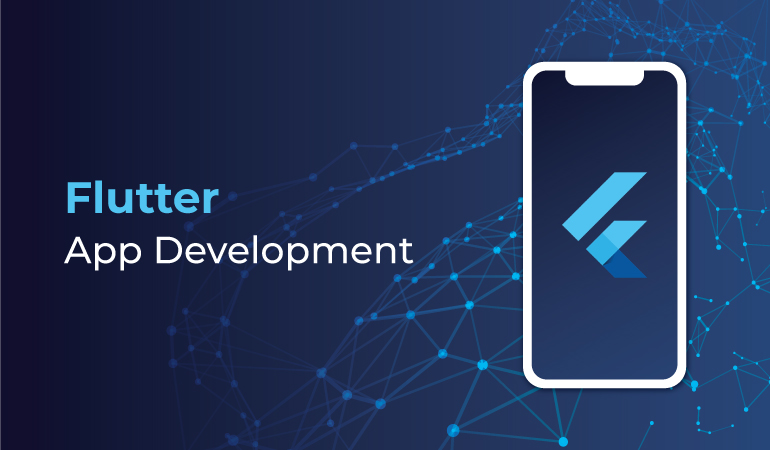
You have probably used Flutter apps without even noticing. If you have ever used a digital coupon, paid with Google Pay, or run a campaign on Google Ads, you have experienced Flutter at work.
Google first launched its alpha toolkit in May 2017 and released its stable version at the end of 2018. From there onwards, Flutter’s popularity has dramatically increased. In 2020, Flutter released its third generation, which offered upgrades to improve the user experience for both end users and developers. Wanna know Flutter pros and cons in detail?
This article explains what Flutter is and highlights its advantages and drawbacks. Let’s go straight to the Flutter pros and cons.
What is Flutter?
Flutter is Google’s open-source SDK (software development kit) for building mobile, desktop, and web applications for Android, iOS, and Windows using a single codebase. It enables developers to create great cross-platform mobile application development, thus saving time and effort as they don’t have to code separately for the apps. You just need a single codebase for the various platforms. Therefore, there are many advantages of Flutter app development.
It is also very important to note that Flutter is not a library or a framework, unlike other popular app development solutions. Instead, it is an SDK – a comprehensive set of tools needed for application development, including documentation, libraries, frameworks, APIs, etc. Moreover, Flutter app development tends to offer a lot. We will see that in the coming sections.
What Does Flutter Offer?
Flutter offers all the tools you require for building exceptional, high-performance cross-platform applications. Therefore, let’s explore Flutter’s architecture and Flutter app development.
Flutter has the following major architectural layers:
- It has an embedder that employs a platform-specific and enables an application to run on any operating system.
- It has an engine written in C/C+ that enables low-level implementation of Flutter’s fundamental APIs. This includes text layout, graphics (Skia), accessibility support, file and network I/O, a Dart runtime and compile toolchain, and plugin architecture.
- It has a framework based on Dart, a client programming and object-oriented language developed by Google. Although it offers an amazing set of libraries that you can divide into layers (rendering layer, widget layer, etc.), its implementation is optional and not compulsory.
Widgets are another critical Flutter component. However, they function as the building blocks that encompass all the development framework aspects in the Flutter SDK. Flutter app development gives you access to many ready-made widgets in addition to letting you customize them or create your own widgets. Widgets make Flutter an object-oriented programming language, and all the objects in Flutter are widgets, be they fonts or buttons. You can organize them as trees in the SDK in Flutter app development.
Moreover, Flutter gives you access to an automated testing toolset that you can use to run three tests: unit, widget, and integration. Also, you can learn more about these tests here.
Flutter app development also supports the continuous delivery development and release model through Fastlane (an open-source automation platform) to connect Flutter with famous continuous integration tools like Jenkins, Travis, etc.
You can use Dart DevTools, which you also refer as Flutter DevTools, for debugging. You can use them to analyze performance, inspect the layout, debug apps, etc. Also, you can learn more about Flutter’s architecture by clicking here. Thus, Flutter architecture layers are multiple purpose.
A Word on Flutter 2 & Flutter 3
Google originally developed Flutter as a mobile-centric SDK to help developers build native iOS and Android apps using a single codebase. However, Google released Flutter 2 in 2021 to enable developers to build web and Windows apps.
In 2022, Google launched Flutter 3, offering support for macOS and Linux that runs on Apple and Intel processors. It also supports Material Design 3 (a set of tools used to build beautiful UIs) and foldable phones. Thus, Flutter technology supports application development across six platforms.
Let’s discuss the pros and cons of Flutter app development now.
Pros and Cons of Flutter App Development
Every programming language has its own benefits and drawbacks. However, one can say that Flutter is unique in that its advantages outweigh its disadvantages when compared to other similar technologies. Let’s have a look at the Flutter advantages and disadvantages.
Let’s look at some of the leading benefits of Flutter, which differentiate it from other competing languages.
Pros
- Single Codebase – as far as the advantages of Flutter app development are concerned, Flutter offers you a reusable codebase, thus eliminating the need for developers to write different codes for iOS and Android app development. Not only can you use the same codebase for iOS and Android apps but also for desktop and web apps. Moreover, this lowers your development costs and shortens the development time significantly. It also increases the time to market speed.
- Widgets – when we talk of pros of Flutter development, we always consider its widgets. Flutter widgets, a critical component of the Flutter SDK, are an excellent way to create engaging and delightful user interfaces. And the best part about Flutter’s customizable widgets is that you don’t need to worry about your application UI on various devices, not to mention the limitless customization options!
- Great Libraries – As mentioned earlier, Flutter employs the Skia Graphics Library. This open-source, fast, and mature graphics library redraws a user interface (UI) each time a different view is presented. Also, it enables quick application loading and a seamless app experience.
- Hot Reload – You don’t need to reload your Flutter app every time you make a change in its code. Instead, you can use its hot reload feature to execute changes in your app in real-time, thus enabling you to experiment with the code and address bugs simultaneously.
- Cross-Platform Consistency – Flutter ensures consistent UI and behavior across different platforms, which eliminates the need for developers to write platform-specific code. As a result, this streamlines the development process and enhances the user experience by providing a cohesive interface across various devices and operating systems.
Cons
Let’s have a peek at the Flutter disadvantages.
- Large File Size – Flutter apps are often large due to widgets. This causes them to take up more space on your device. Additionally, it also means that Flutter apps take more time to download and update.
- Absence of Third-Party Libraries – Third-party libraries and packages are vital in software development automation. Although Flutter widgets largely remove the need to depend on third-party libraries, the packages (over 25,000) in Flutter are less than React Native’s, its main competitor. The reason is that Flutter is a relatively new SDK. However, the number of these libraries and packages is increasing with time.
- Complex Updates – You have to update Flutter modules in order to update an operating system’s programming requirements. This means you have to recompile and reinstall Flutter modules on the devices since the modules are integrated as fixed components in the program.
Wrap Up
So what did you gather from the pros and cons of Flutter? Despite having a few shortcomings, Flutter is increasingly becoming the go-to SDK for developers looking to build incredible cross-platform mobile applications. It is backed by Google and boasts a rapidly growing community of developers.
Many leading companies use Flutter for web, desktop, and cross-platform mobile application development trends, including Airbnb, Alibaba, and eBay, among others.
Xavor has an expert team of Flutter developers that comprehends your business needs and delivers a top-notch application to help you accelerate your business growth.
Are you interested in building a flutter app development? Contact us at [email protected] for a free 15-minute consultation session.
Drop us a line and get the needle moving!
